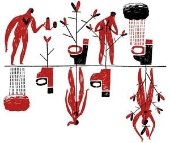





 1
1




It can be done!












Brenda Groth wrote:i heard recently that animal feces contain something that is very dangerous for pregnant women..is that covered in thses books?




 1
1




Seed the Mind, Harvest Ideas.
http://farmwhisperer.com




 1
1








--
len
With peace and brightest of blessings,
"Be Content With What You Have And
May You Find Serenity and Tranquillity In
A World That You May Not Understand."
http://www.lensgarden.com.au/
 1
1




It's time to get positive about negative thinking  -Art Donnelly
-Art Donnelly

 1
1




Seed the Mind, Harvest Ideas.
http://farmwhisperer.com
 1
1




--
len
With peace and brightest of blessings,
"Be Content With What You Have And
May You Find Serenity and Tranquillity In
A World That You May Not Understand."
http://www.lensgarden.com.au/








--
len
With peace and brightest of blessings,
"Be Content With What You Have And
May You Find Serenity and Tranquillity In
A World That You May Not Understand."
http://www.lensgarden.com.au/
 1
1







Monte Hines-Hines Farm Blog- http://hines.blogspot.com
 1
1




Community Development, Creating a Global Network of positive change and sustainable solutions, Internships, Permaculture, Self-Discovery, Natural Healing, http://www.AbundantGlobalSolutions.org




Monte Hines-Hines Farm Blog- http://hines.blogspot.com
 1
1




It's time to get positive about negative thinking  -Art Donnelly
-Art Donnelly

|
Hey, check out my mega multi devastator cannon. It's wicked. It makes this tiny ad look weak:
rocket mass heater risers: materials and design eBook
https://permies.com/w/risers-ebook
|



